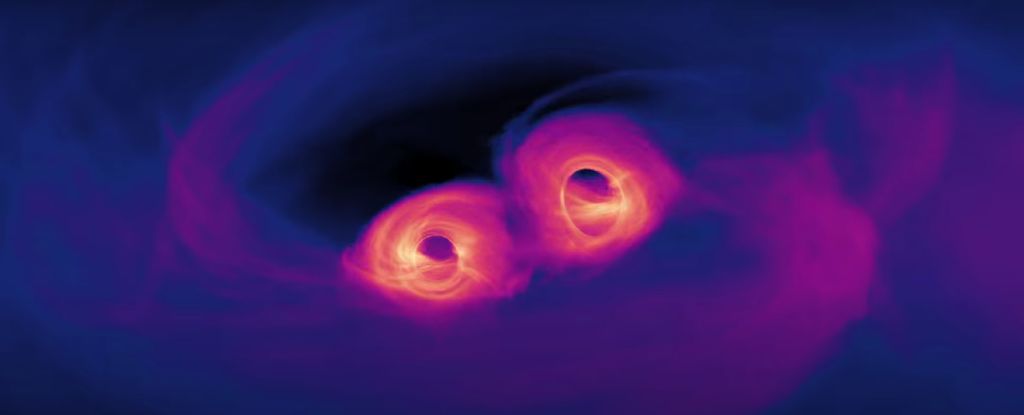Two supermassive black holes in a galaxy one billion light-years away are constantly reducing their period of mutual rotation. In the next three years, scientists expect their merger. It is not known how it will be observed, but scientists really want to see it.

The merger of supermassive black holes
Two supermassive black holes are to merge soon. This was reported by a group of Chinese astronomers observing the galaxy SDSS J1430+2303. It is located at a distance of one billion light years from us and exhibits oscillations that are very characteristic for the rotation of two colossal objects with a total mass of 200 million times that of the Sun around each other.
Scientists interpret the nature of the change in signals as a rather rapid drawing together. According to astronomers, over the past three years, the rotation period of the two black holes has decreased from approximately one year to one month. So, it is quite possible that soon these two objects will merge into one.
“Soon” for astronomers may mean periods of time exceeding not only lifespan of a human being, but also that of most modern states. However, this time we are talking about just three years, within which we can expect the merger.
How to watch the event?
The merger of supermassive black holes is the most significant event that modern astronomy can witness. In addition to the grandeur of the event itself, it is also interesting because it will help solve one of the greatest mysteries of modern science.
We still do not know how supermassive black holes in the centers of galaxies grow to such a size. The most popular theory says that this happens exactly through merger. But the event in the galaxy SDSS J1430+2303 — if it does happen — will be the first one for humans to witness.
Since 2015, astronomers have been able to study several dozen of black holes mergers. However, all of them were objects of stellar mass. LIGO and Virgo detectors are designed to register frequencies that correspond to this smaller mass range. If a truly gigantic collision really awaits us, then we may simply not feel the gravitational waves from it.
And the very fact of the existence of a pair of supermassive black holes in such a close orbit has not yet been conclusively proven. For, in addition to the monsters whose images people learned to get recently, there is a lot of other interesting objects: giant stars, molecular clouds where star formation takes place, pulsars and filamentous radio clouds. All of these emit energy at different frequencies and it can be hard to clearly interpret every single radiation fluctuation.
Sourced from: www.sciencealert.com

